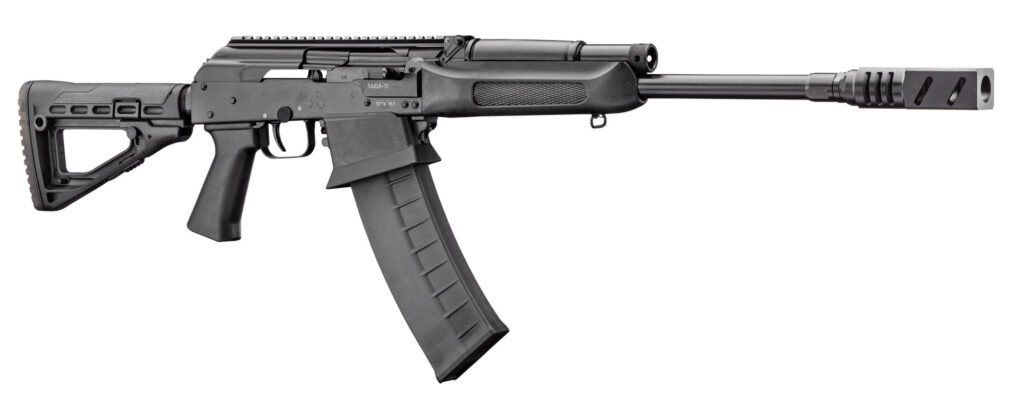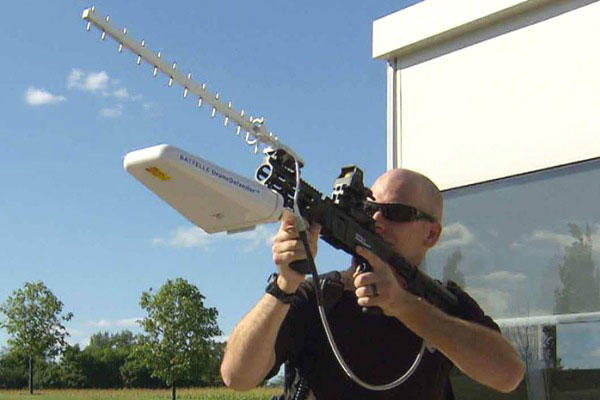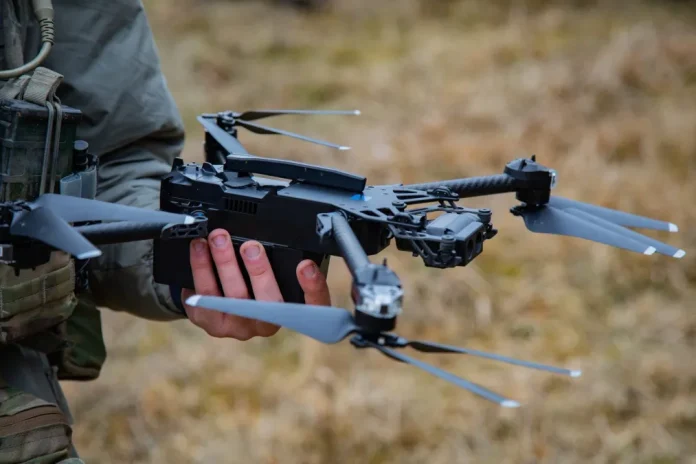[[{“value”:”
Thank you for reading this post, don't forget to follow and signup for notifications!
The danger of drones in modern warfare cannot be underrated.
Here are our tips to take on the flying mechanical dangers of the modern battlefield.

Here is why the immediate dangers of drones cannot be overlooked.
Several characteristics make drones particularly concerning in conflict:
- Distance and anonymity. An attacker can operate a drone from far away, reducing their immediate risk physically to themselves and their identity. This can allow them to operate in secrecy from a remote location.
- Precision and persistence. Modern small UAS can loiter, collect surveillance, and conduct precise strikes against discrete targets such as vehicles, checkpoints or infrastructure at will.
- Affordability and ubiquity. Commercial off-the-shelf drones are inexpensive and widely available; groups with limited resources can field many of them.
- Scalability and swarming. Multiple inexpensive UAS can be used together to saturate defenses or force defenders to exhaust limited countermeasures.
- Dual-use capability. Many legitimate civilian uses of drones, such as photography, surveying, agriculture and many others. This makes governmental regulations and enforcement much more complex. How do you pick and choose who can use them anyway in this high tech society??
In the age of modern warfare the keyboard controller for a weaponized drone might be the most terrifying new weapon out there. While the operator sits miles away in safety, a bomb laden drone can be used against the enemies with eagle like precision and complete user safety. What can be done at the receiving end of that deadly flying package of death and destruction? We take a look at what counter measures can be used against such robotic foes.
The first step in defending an area is knowing that an airborne threat exists. Detection systems combine multiple sensors available such as acoustic, radiofrequency, radar, and optical to provide situational awareness on any dangers on the horizon.
- Sensor fusion. No single sensor type is perfect. Combining radar for medium-range alerts, acoustic arrays for close-in detection, and visual cameras for confirmation increases reliability.
- Automatic identification systems. Software can help classify an incoming contact as a small UAS versus a bird or a benign aircraft, reducing false alarms and enabling appropriate responses.
- Integration with command networks. Detection is most valuable when fused into a command and control layer that informs decision-makers and triggers preplanned responses. Action can be taken quickly to avoid and problems.
The result is a need for weapon systems and ideas that can be deployed quickly to combat such a menace.

THE SHOTGUN.
Flying targets are literally made for the shotgun. My choice would be a Saiga 12 shotgun loaded with a 25 round drum magazine and the proper loads. While for decades the trusty shotgun fell to the wayside in military use, many shotguns have now been dusted off and pressed into service against rapidly moving threats from the air. Load up with buckshot or heavy waterfowl loads. Pick 12 gauge in 3″ Magnum or even better yet 3.5″ Magnum. Now you are ready for some fast exploding skeet!
What size shot should you use? Let’s first look at the knee jerk reaction for many shotgunners, “double ought buckshot”. On the box, you will actual see it as size 00 buckshot, which is a .33 caliber round ball. With a standard load of 9 pellets in a 2.75″ shell they hit hard, have some range, but only throw 9 projectiles at a time. Now if you use a 3″ magnum load you have a standard of 12 large pellets, but there is a lot of room between those pellets for taking down a menacing aerial target. Time to drop the size down smaller and get more pattern filling pellets in your blast.
How about size #1 buckshot? This .30 caliber pellet size has a lot going for it. While smaller in size than the 00 buckshot it still packs a punch and a standard 2.75″ 12 gauge shotshell contains 12-16 pellets. This offers better hit probability on flying targets. Now load up a 3″ magnum shell and you have 24 pellets.

What about size #4 buckshot? Well a standard 2.75″ load will hold 27 pellets of .24 caliber round balls and a hefty 41 pellets in the 3″ magnum variety. If your shoulder allows and your shotgun is chambered for it, a 3.5″ magnum will hold quite a load of 54 pellets!


Does smaller shot have a place? Magnum duck loads certainly will take down a drone as sure as it will take down a goose but watch your distances. Drones have quite a bite if just provoked!
Cheap trap and skeet loads in shot size #8 or similar will have very limited range. While they might disable a drone at closer range, it would not be wise to target a bomb laden flying vehicle too close to you or else you might be the next target!

NETS.
If you can catch a bird in a net. you can catch a drone in a net also. Thin and almost invisible netting has been used for catching birds for many centuries. A modern almost invisible net would tangle in the drone’s moving parts and stop it in it’s flight.
What about old fishing nets? They are being implemented in Ukraine with good reported function. While the old fishing nets might be done after a hard life in the sea they work great for armoring an area from drone attacks.

Drone Jammers.
High tech meets the drone world. If you cut the communication from the operator to the drone, well the drone crashes. How does it work?
- Disrupts communication: A jammer broadcasts radio frequency signals on the same frequencies a drone uses to communicate with its pilot and a GPS satellite.
- Causes loss of control: By jamming these signals, the device makes it impossible for the drone to receive commands or know its location, causing it to lose control.
- Forces a response: Depending on the jammer’s sophistication, the drone will either be forced to land in place or return to its launch location using its pre-programmed fail safe protocols.

Wire Cutters
Some drones have utilized wires to avoid drone jammers. A quick soldier on the ground can watch for the trailing wires and snip them when the drone has passed their position. The drone then crashed and the soldier survives. There are plenty of videos shared of this daredevil approach to dealing with wired drone attacks currently during the modern high tech conflicts. It is a low tech response for a high tech cabled drone. Of course there are drawbacks, such as the targeted drone circling back to come after you or another drone guarding the first that might have you for dinner!

Decoys.
Deception has always been part of a wise defense. Deploying non-valuable decoys or false targets can force an adversary to expend limited drones on worthless strikes and reveal their intent and methods. This style of “cheating the enemy” is most effective when combined with forensic recovery and intelligence exploitation. Fake “targets” that have been left out for drone attacks use up the enemy’s resources by literally destroying them. While drones are on the cheap side in cost, only so many of them are available at a given time. If those available drones crash into plywood replicas of actual targets, well guess who wins that round of battle? Also, fake unarmed drones can be used too. The party appears to have just begun!

Counter Drones.
What about drones to fight drones? Talk about the non-classic dog fight! Why not go after an enemy’s drone with your own?

Drones are evolving and becoming smaller, more autonomous and absolutely more numerous. Defenders must therefore prioritize how the approach their defensive strategies for such dangers. Here is a quick list on what they should look at:
- Adaptive detection. Better sensors and machine learning for reliable classification and reducing false positives of legit drone usage.
- Scalable responses. Approaches that can handle drone swarms without requiring prohibitively expensive tools.
- Legal and diplomatic frameworks. International collaboration to curb proliferation of weaponized UAS and create shared norms. Governments need to share with each other what they are experiencing with the dangers of drones and new technologies that can aid in the defense against such threats.
- Public-private partnerships. Many critical technologies involve private sector partnerships that will be key with citizens as the eyes and ears on the ground.
- Research and transparency. Open studies of counter-UAS effectiveness and safety inform better procurement and policy choices.
The modern battlefield has changed. Drones offer potent capabilities that can be leveraged for reconnaissance and, worryingly, for lethal delivery. But they are not invincible. A responsible defense balances detection, mitigation, resilience and legal oversight that blends technology with doctrine, training and community preparedness. The aim is not to glorify destruction but to protect civilians and legitimate infrastructure, minimize escalation, and ensure that responses are lawful, proportionate and effective. Be sure not to just shoot drones out of the air or disrupt them because yes, they may be a non-danger to you and have a real use in today’s world.
“}]]



